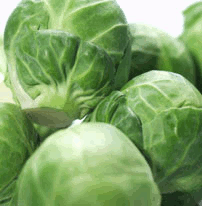Varieties of winter squash
Winter Squash, a member of the Cucurbitaceae family and a relative of both the melon and the cucumber, comes in many different varieties. They are mildly sweet with finely textured flesh and a hollow inner cavity that contains seeds.
All varieties of winter squash, including butternut, acorn, spaghetti and hubbard are hearty and warming winter vegetables. Their rich yellow/orange color reflects an abundance of health-promoting carotenoids, including alpha and beta carotene, (precursor to vitamin A) which work as powerful antioxidants and combat the free radical activity that damage cell structure and DNA.
The hard protective skin of winter squash allows you to store them in a cool dark place for up to 3 months. It is actually best to minimize refrigeration time: refrigerating for longer than 2 weeks will cause the squash to deteriorate quickly. Unlike summer squash, the skin of most varieties of winter squash is not edible and must be removed.
Some varieties of winter squash are also rich in lutein, a type of carotenoid which gives butternut and pumpkin that extra tinge of dark orange color, and which have also been found to be important for heart and prostate health.
BUTTERNUT SQUASH
Shaped like a large pear, this squash has cream-colored skin, deep orange-colored flesh and sweet flavor.
ACORN SQUASH
With harvest-green skin speckled with orange patches and pale yellow-orange flesh, this squash has a unique flavor that is a combination of sweet, nutty and peppery.
HUBBARD SQUASH
A large squash that can be dark green, grey-blue or orange-red in color; it is not as sweet as many other varieties of winter squash.
TURBAN SQUASH
Green in color with speckles or stripes, this winter squash has an orange-yellow flesh and a taste reminiscent of hazelnuts.
KABOCHA
If you have not heard of kabocha or not had a chance to try this Japanese variety of winter squash, you are missing a special treat. It is becoming increasingly available in markets throughout the United States. Its deep yellow/orange colored flesh reflects the presence of lutein and other carotenoids, it has a taste similar to yams so it is richer, sweeter and creamier than other varieties of winter squash and, best of all, you don't have to remove the skin! Kabocha is the one variety of winter squash that you can eat skin and all. After evaluating every variety of winter squash we could find at our local markets, we highly recommend trying kabocha.
PUMPKINS
Ninety-nine percent of the pumpkins marketed in the United States are used for jack-o-lanterns. The varieties used for this purpose are usually too stringy to eat. Sugar pumpkins are a smaller variety which are sweeter and have close-grained flesh which makes them a much better choice for cooking.






